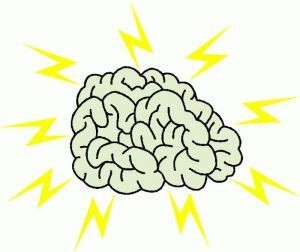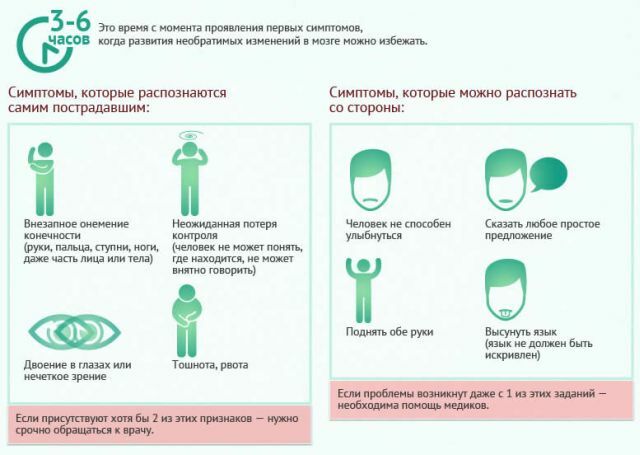Massage stroke rehabilitation is an important component of the complex. It allows you to eliminate pain, restore muscle tone, improve limb mobility. The procedure requires a literate approach and taking into account the individual patient.

Benefits and possible harm
Stroke causes disorders of motor activity, manifested as hemiparesis when muscle mobility decreases or hemiplegia - complete paralysis. In this case, most often affects only one half of the body: the right, if the bleeding has occurred in the left hemisphere or the left (in the case of damage to the right side of the brain). First, broken innervation of muscle fibers, and later the patient's condition is aggravated by the development of muscle atrophy.
Therapeutic massage after a stroke is a necessary complement to medical treatment and the rate of therapeutic exercises. Features of the meeting depends on the severity of the lesions and the individual patient response.
Doubts about whether it is possible to massage stroke, in vain, because the treatment helps damaged structures faster and better able to recover, although in severe violation of the guarantees of full recovery no. With this approach, the motor activity begins to return for a few weeks before, and primary rehabilitation gives a more encouraging results. As soon as the patient's condition has stabilized after a stroke, you can begin to massage the affected areas.
As practice shows, this procedure allows you to:
- increase the intensity of blood and lymph flow;
- improve the nutrition of tissues, gas exchange and retraction of the decay products;
- normalize muscle tone;
- eliminate the cramping and pain;
- get rid of contractures, resume reflexes and mobility of joints;
- restore motor activity of muscles;
- activate digestion, eliminate constipation;
- prevent the appearance of puffiness and bedsores;
- prevent pneumonia and pulmonary edema;
- remove the emotional stress.

But the maximum effect is possible only through an integrated approach to treatment. Do not use massage in isolation, neglecting the drugs, physiotherapy, diet, physical therapy, rehabilitation in sanatoria and health resorts.
It should be understood that the post-stroke rehabilitation massage manipulations are different from the usual methods of therapeutic procedures. Therefore, before performing the procedure yourself at home, should be a time to monitor how does massage specialist. Incorrect actions may exacerbate the condition of the patient, cause fatigue, excitement, pain, spasms of muscles, increasing blood and intracranial pressure, breathing problems.
Basic Rules
Restorative massage after a stroke is performed at first only in the affected areas. Over time, the process involved surrounding area and gradually covers the entire body. The intensity of exposure should also gradually increase. It should be understood that the weakened body of the patient during the procedure undergoes a load, so that all actions must be limited (according to each recovery phase).
In ischemic lesion test session can be carried out already at 2-3 days of hospitalization, and hemorrhage should take about a week. If the patient responds well to the procedure, the exposure should be continued. In the event of poor tolerance or a deterioration of the return to massage you need a few days.
During stroke rehabilitation massage initially carried out by experts. In agreement with the neurologist, he picks up the optimal variant of massage effects.
Subsequently, it can perform a relative who has mastered all the nuances of the procedure. Any changes in the patient's condition, not only negative but also positive, you need to report regularly to the physician.
Manipulations are performed on clean skin with warm hands. The room temperature must be comfortable. Massaged the surface must be pre-warmed. To do this, you can use a warm bath, blanket or heating pad. In order to facilitate the sliding allowed to use massage oil or baby oil.

An important role is played by heat retention after the procedure. Therefore, a patient harboring and give lie down for 20-30 minutes. You need to follow some other rules:
- Massage is not carried out on a full stomach. Postprandial must wait for at least 1.5 hours.
- Actions should not cause pain and cause skin damage.
- Intensive and power technique (pat, rapping and m. P.) In stroke apply.
- During the massage, you need to proceed in accordance with the movement of lymph flow (in the direction of the lymph nodes).
- Massage is performed on a regular basis taking into account all medical recommendations, appointed on an individual basis.
- Any changes in the approach to the implementation of the massage should be agreed with your doctor.
- Carrying out the procedure prohibited under increased pressure, heat, pain in the head or the heart, and in violation of the respiratory function.
duration of sessions
Stroke massage should be started as early as possible. The duration of the first Session shall not exceed a few minutes. In the absence of adverse effects of the duration of the procedure gradually increases. By the end of the second week, it can be 15-20 minutes. At this time already worked not only affected, but also related fields. After a month on the full body massage takes 30-40 minutes.
duration of the course
When to do massage, how often it is carried out and for how long, determined by the physician. It depends on the speed of recovery, and other features of the individual patient. In most cases, spend 25-30 sessions. Then make a break for 2-3 weeks, followed by a more intensive massage course.

How to do massage
Massage after a stroke in the home must include not only affected, but also the healthy side of the body. At this time, the patient is already possible not only to lay on your back or on your side, but also to turn the stomach.
First, warm up the desired part of the body and determining muscle tone. Spastic muscle group can only caress and rub gently. Deeper and more proactive in these areas are contraindicated. If the muscles are overstretched, the movement should be light, quiet, relaxing. And in areas with loose, atonic muscles must act more vigorously, increasing the speed of a few, but not the force of impact.
Some areas need to work out with great delicacy to avoid muscle cramps. These include the soles of the feet, the back of the lower leg, the front of the thighs, shoulders and forearms, palms, and the pectoralis major muscle.
Massage techniques stroke allow the use of manual methods, spot stimulation and the use of special massagers.
overall
This massage stroke is needed to relax and calm the patient. It can be used for pre-heating of the body in front of the development of the affected limb or spending at the end of the massage session. The patient should be in a comfortable position. To provide muscle relaxation for the affected limbs enclose the pillow. Begin to impact with the affected side of the body. Thus, when stroke on the right side first massage the left side.

The massage is performed using a variety of manual techniques:
- Sliding stroking covers 1 or 2 hands. Allowed linear or zigzagovidnye movement, at first light, then deeper. They should be leisurely, but rhythmic.
- Trituration of the skin with the activation of the subcutaneous fat layer. Satisfied with your fingers or heel of his hand with some pressure, which yields a skin roller. Movement may be straight or circular.
- Painless kneading muscles, oriented longitudinally or transversely. Takes place slowly and delicately, may alternate with strokes. Running base fingers or palm. Slight tweaks.
- Vibration. Produced pad of any finger or the entire surface of the palm. Preferred average frequency and large amplitude fluctuations. Movement oriented predominantly right to left.
Carry them in sequence, repeating every 3-4 times. In conclusion, always perform a series of strokes.
Legs
In the lower extremities neuromuscular excitability manifested to a lesser extent, so segmental massage starts from here. Massage in the home leg muscles needed in the following sequence:
- femoral part - from the knee to the buttocks;
- from the ankle joint to the knee joint;
- toes (in any order), the sole, the heel, the outer surface of the foot.

Initially working on the front and side surfaces, and then back. Massage technique for stroke in different parts of the body does not change: the impact of light is replaced by a more intense, and then becomes shallow again. We must remember that massage the calf muscles and the Achilles tendon can cause spasm, so act in this area need to delicately.
Hands
Hand massage should promote lymphatic drainage and elimination of swelling. Therefore, it is recommended first to work out the upper arm in the direction from the elbow to the shoulder articulation, then the forearm, moving from the wrist to the elbow, and then massage the fingers, palm. At each site tested first hand on the rear surface, and then - at the front.
Massage stroke left side start with the right hand. Act should be careful not to cause a spasm. On the other hand, the procedure is carried out in the same sequence, but with greater intensity.
back
To massage the back, the patient is placed on its side or on your stomach. We need to move away from the spine to the periphery towards the armpits, waist knead, moving from the edges of the boundary to the buttocks. Here it is possible to act more intensively, using the same techniques as for the impact on the region of the limbs.
Good results are obtained acupressure, but it needs to know which active points can be massaged. Therefore it is better to seek help from a specialist.



